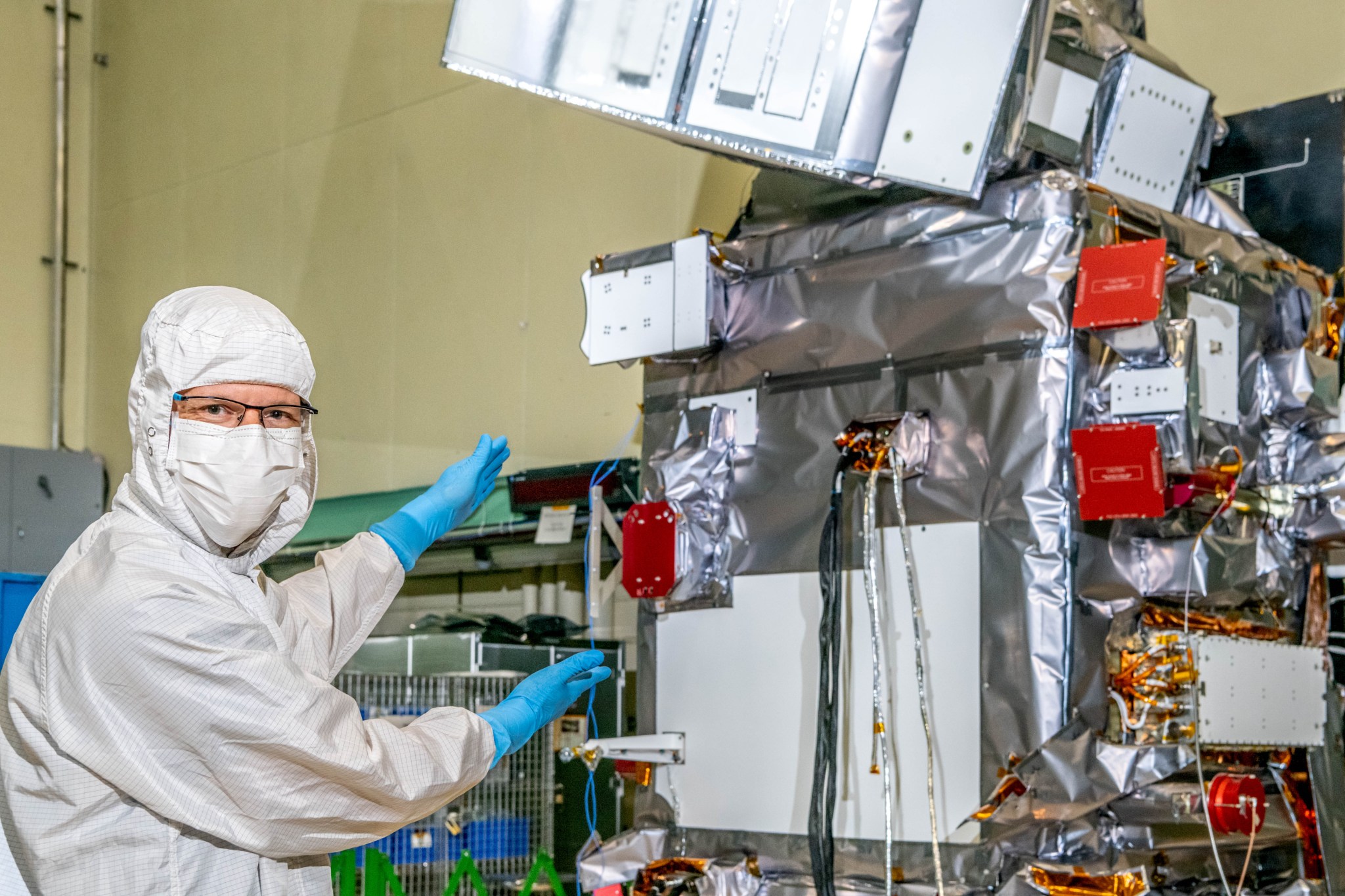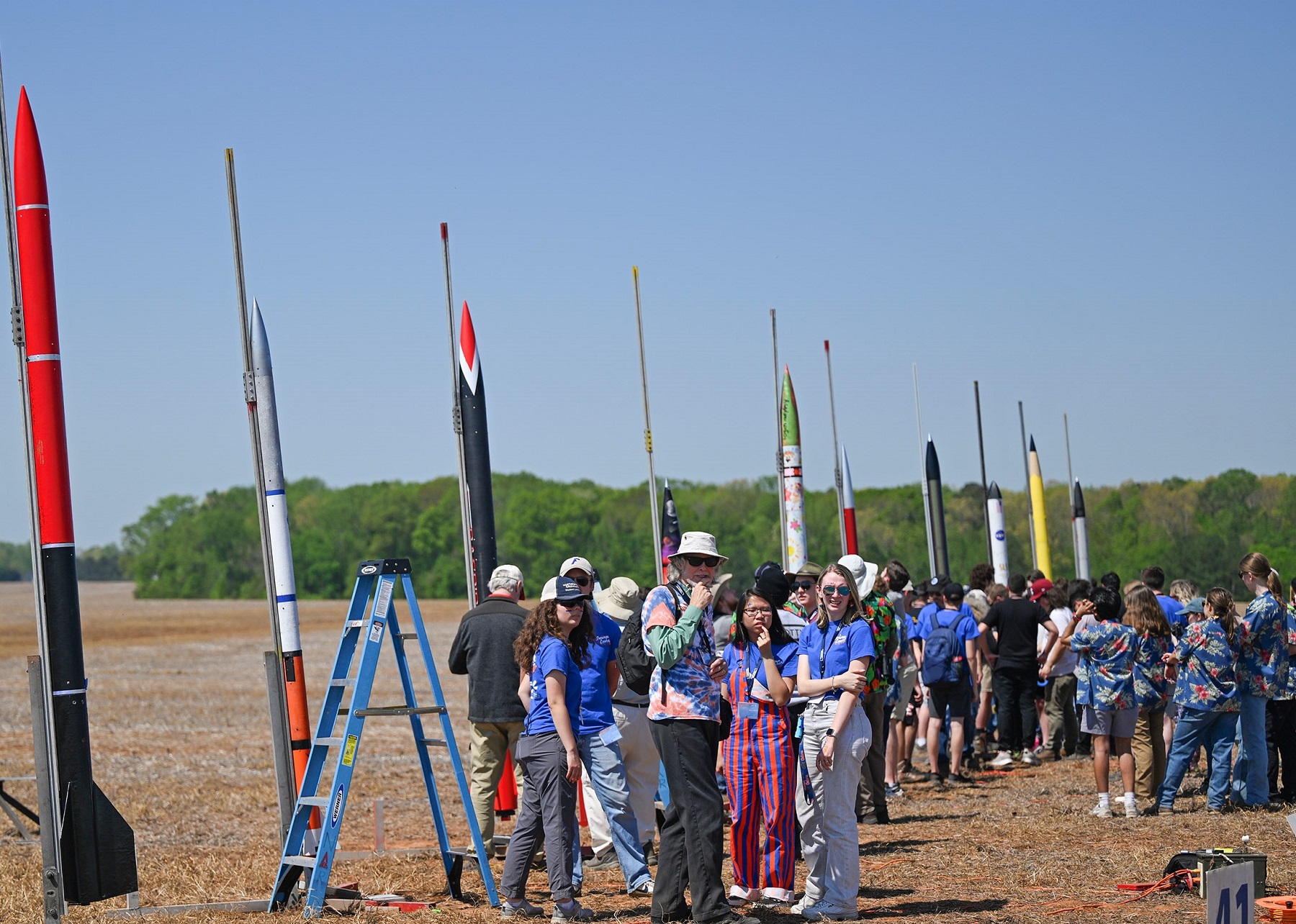New NASA Satellite To Unravel Mysteries About Clouds, Aerosols

Some of the same properties of light and optics that make the sky blue and cause rainbows can also help scientists unlock mysteries about cloud formation and the effects of tiny particles in our air.
NASA’s upcoming PACE mission will offer important insights on airborne particles of sea salt, smoke, human-made pollutants, and dust – collectively called aerosols – by observing how they interact with light. With PACE data, scientists will provide better answers to key questions such as how aerosols affect cloud formation or how ice clouds and liquid clouds differ. Understanding the nature of airborne particles and clouds is crucial to deciphering how climate and air quality are changing.
Two instruments on NASA’s upcoming PACE mission will look at aerosols and clouds – the A and C in the name of the Plankton, Aerosol, Cloud, ocean Ecosystem satellite. After launch in early 2024, the PACE mission will scan the Earth and gather data on the chemical composition, movement, and interaction of aerosols and clouds through the use of two cutting-edge polarimeters – instruments that measure light properties.
Credit: NASA’s Goddard Space Flight Center
Download this video in HD formats from NASA Goddard’s Scientific Visualization Studio: https://svs.gsfc.nasa.gov/14454/
There are characteristics of light that we can see with our eyes, such as color. Other characteristics are invisible to the human eye, like what scientists call polarization.
“Polarization is something that we don’t have an intuitive sense for because our eyes don’t see it,” said Kirk Knobelspiesse, polarimetry lead for the PACE mission at NASA’s Goddard Space Flight Center in Greenbelt, Maryland. “If you saw the world through eyes that could see polarization, like our sensors can, you would see rainbows everywhere.”
Light leaving the Sun moves in all different directions like a wave – this is called unpolarized light, said Brian Cairns, deputy project scientist for PACE. When it interacts with something like a cloud or an aerosol particle, however, light can oscillate more in one direction than the others: It is now polarized light. This quirk of light behavior can help scientists learn more about the characteristics and interactions of aerosols and water droplets in the sky.
Polarimeters measure the angle at which the light is polarized, which reveals specific characteristics of whatever the light had bounced off of. With these instruments, scientists can piece together the size, composition, abundance, and other traits of the particles in the atmosphere.

An example of a cloud bow, taken late on a winter afternoon in Santa Cruz, California. The cloud in this case was light coastal fog, so this could also be referred to as a fog bow. In the scene, the sun was positioned low in the sky directly behind the viewer so that backscattered light is observed. While this observation geometry is rare from the surface of the earth, it will be common for PACE/HARP2.
NASA/Kirk Knobelspiesse
The two polarimeters on PACE – HARP2 and SPEXone – make a great pair because of the complementary differences in what they measure. HARP2, built at the University of Maryland, Baltimore County, will observe four wavelengths of light from up to 60 different angles. SPEXone, built at the Netherlands Institute for Space Research (SRON) and Airbus Netherlands B.V., will peer down at a narrower swath, using five viewing angles but looking at light at hyperspectral resolution – the full range of colors in a rainbow. Together the polarimeters will offer a picture of Earth’s atmosphere in unprecedented detail.
Scientists have been observing aerosols from space for decades, though the community has not had polarimetry data for a decade, noted Otto Hasekamp, senior scientist at SRON. PACE will provide polarimeter data from multiple vantage points and, due to technological advancements in the instruments, the data will be of better quality than ever before.
“It’s exciting to see the culmination of working actively on instrument models and prototypes,” said Jeroen Rietjens, instrument scientist at SRON, “then finally seeing it end up on a real satellite.”

Jeroen Rietjens in Goddard cleanroom with PACE. “Very proud to be in the Goddard cleanroom and to pose with the fully assembled and tested PACE satellite, which hosts our small SPEXone instrument. The instrument is neatly wrapped in grey thermal blankets and still has the red radiator cover in place. It is surreal to realize that In a few months it will be staring at the Earth and collecting multi-angle spectro-polarimetric data that will enable scientists to infer the amount and type of aerosols in the Earth atmosphere and contribute to a better understanding of the effects of aerosols on climate,” said Rietjens.
NASA/Denny Henry
After PACE is launched in early 2024, the satellite will scan Earth every two days, gathering immense quantities of data on the chemical composition, movement, and interaction of aerosols and clouds.
“We want to measure properties of aerosols because aerosols affect climate,” said Hasekamp. They reflect light back into space and can also absorb it, which plays a role in how much of the Sun’s energy reaches Earth’s surface. Aerosols also affect cloud formation and properties, but the details of these relationships are not fully known to scientists. The data PACE collects will help to clarify some of these unknowns.
The new polarimetry data will also offer real-time insights on air pollution. “PACE measurements will not only answer fundamental science questions, but will also improve people’s quality of life,” said Marcela Loría-Salazar, assistant professor at the School of Meteorology at the University of Oklahoma and PACE early adopter. The PACE Early Adopters program promotes the integration of PACE data into practical applications of science.
Loría-Salazar is particularly interested in how aerosols change over time and with location, with an extra emphasis on the altitude of aerosols over the middle of the United States. There, PACE will allow scientists to identify aerosols, while also deciphering what they mean for air quality.
The measurements from PACE’s polarimeters will also help improve our understanding of Earth’s climate. By adding PACE atmospheric data to models, scientists will be able to replace the estimates now used to fill data gaps in those models with data from current measurements.
“I’m hoping to help gather the data that will reduce model uncertainty and help us make better predictions for how we expect our climate to play out in the next decades and centuries,” Knobelspiesse said.
By Erica McNamee
NASA’s Goddard Space Flight Center, Greenbelt, Md.



